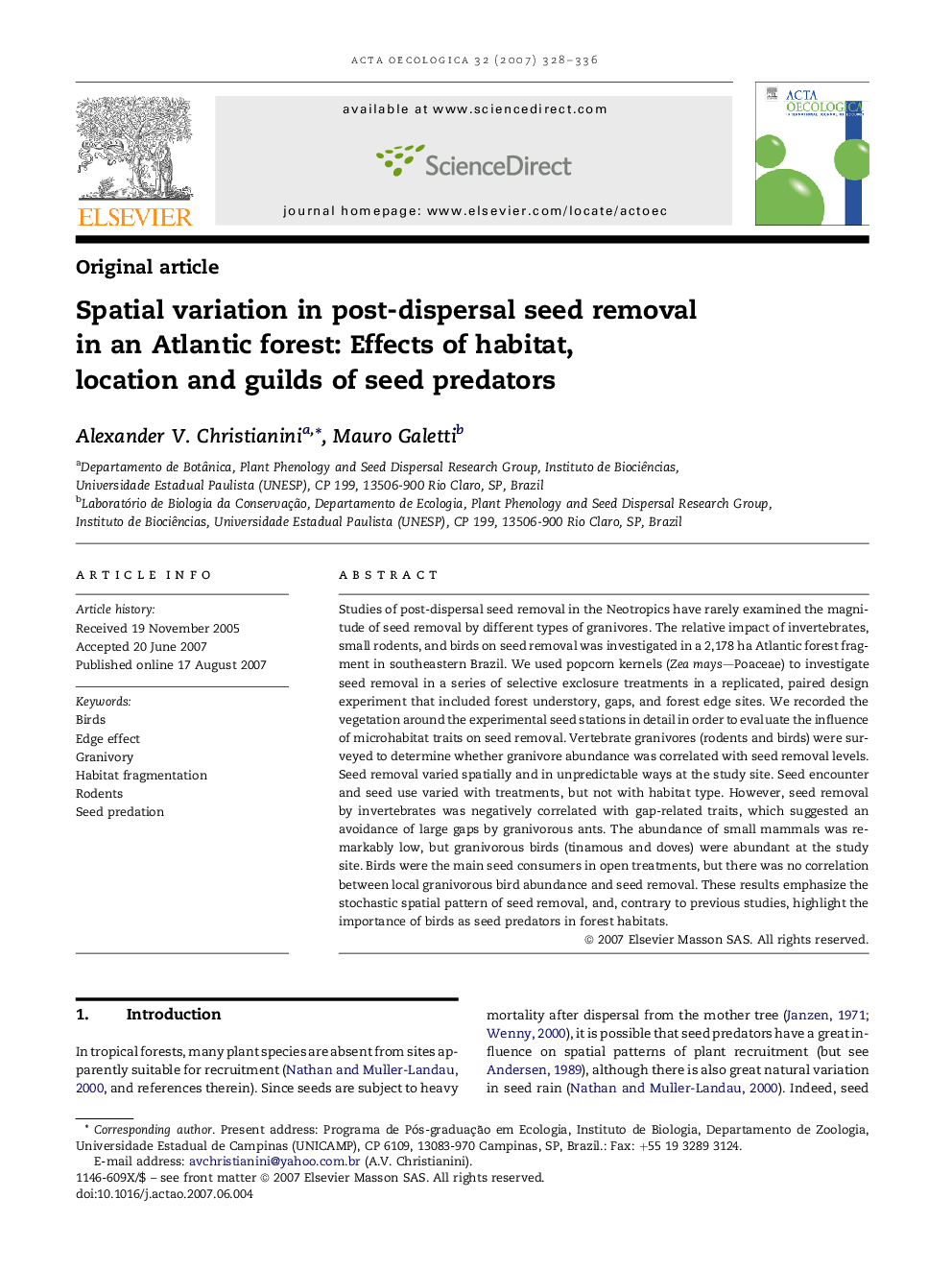| Article ID | Journal | Published Year | Pages | File Type |
|---|---|---|---|---|
| 4381699 | Acta Oecologica | 2007 | 9 Pages |
Studies of post-dispersal seed removal in the Neotropics have rarely examined the magnitude of seed removal by different types of granivores. The relative impact of invertebrates, small rodents, and birds on seed removal was investigated in a 2,178 ha Atlantic forest fragment in southeastern Brazil. We used popcorn kernels (Zea mays—Poaceae) to investigate seed removal in a series of selective exclosure treatments in a replicated, paired design experiment that included forest understory, gaps, and forest edge sites. We recorded the vegetation around the experimental seed stations in detail in order to evaluate the influence of microhabitat traits on seed removal. Vertebrate granivores (rodents and birds) were surveyed to determine whether granivore abundance was correlated with seed removal levels. Seed removal varied spatially and in unpredictable ways at the study site. Seed encounter and seed use varied with treatments, but not with habitat type. However, seed removal by invertebrates was negatively correlated with gap-related traits, which suggested an avoidance of large gaps by granivorous ants. The abundance of small mammals was remarkably low, but granivorous birds (tinamous and doves) were abundant at the study site. Birds were the main seed consumers in open treatments, but there was no correlation between local granivorous bird abundance and seed removal. These results emphasize the stochastic spatial pattern of seed removal, and, contrary to previous studies, highlight the importance of birds as seed predators in forest habitats.
